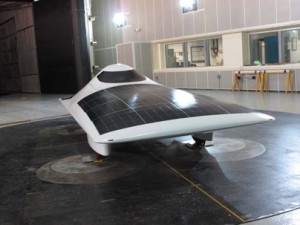
A couple of weeks ago Warm Home Cool Planet featured a story on the 2010 Chevy Volt–the car that will save GM–and the first mass market example of transport technology that might save us all in the end. But will the public buy it.
This article about the Tesla (the all electric roadster favored by environmentally-conscious celebrities such a George Clooney) demonstrates there is a market for these cars, as long as they are appropriately targeted to customers.
The most interesting part of the article examines the company’s financial arrangements with customers to replace the car’s battery, which they estimate has a lifetime of approximately 7 years or 100,000 miles. As you can imagine, you don’t simply undo the cables and hand swap them like a vehicle powered by an internal-combustion engine. Currently, Tesla imagines the cost of replacement at $32,000. But they will take an upfront payment of $12,000 when you plunk down $105,000 for the Roadster.
If you can afford 100 grand for a car, the $12,000 upfront rather than sounds like a pretty good risk, particularly in this investment climate. It brings up a interesting point about the marketability of electric and hybrid cars. If the battery on this these cars has a finite lifespan, owners already paying a premium to cut down their CO2 emissions will be hit with a substantial repair bill after owning the car for a number of years. This will affect the the resale of these vehicles, making them a less attractive new car purchases.
By taking the money upfront Tesla is taking a gamble too. They are betting that by the time these batterries need to be replaced, technology will them to install a new power source for their car at closer to the $12,000 they took from each new car buyer.
GM has not made any definitive statements about the lifespan or replacement cost of the electric batteries in Volt. But even $12,000 is almost half the cost at which they plan to sell the car. Warm Home Cool Planet’s advice to all planning on buying a Volt… bank that rebate check and compound that interest–you may need it.
Stay tuned for more on this subject.



 “If you’re readying a resume, it might help to use recycled paper. The clean-tech and green industries in Massachusetts are hiring.”
“If you’re readying a resume, it might help to use recycled paper. The clean-tech and green industries in Massachusetts are hiring.”
